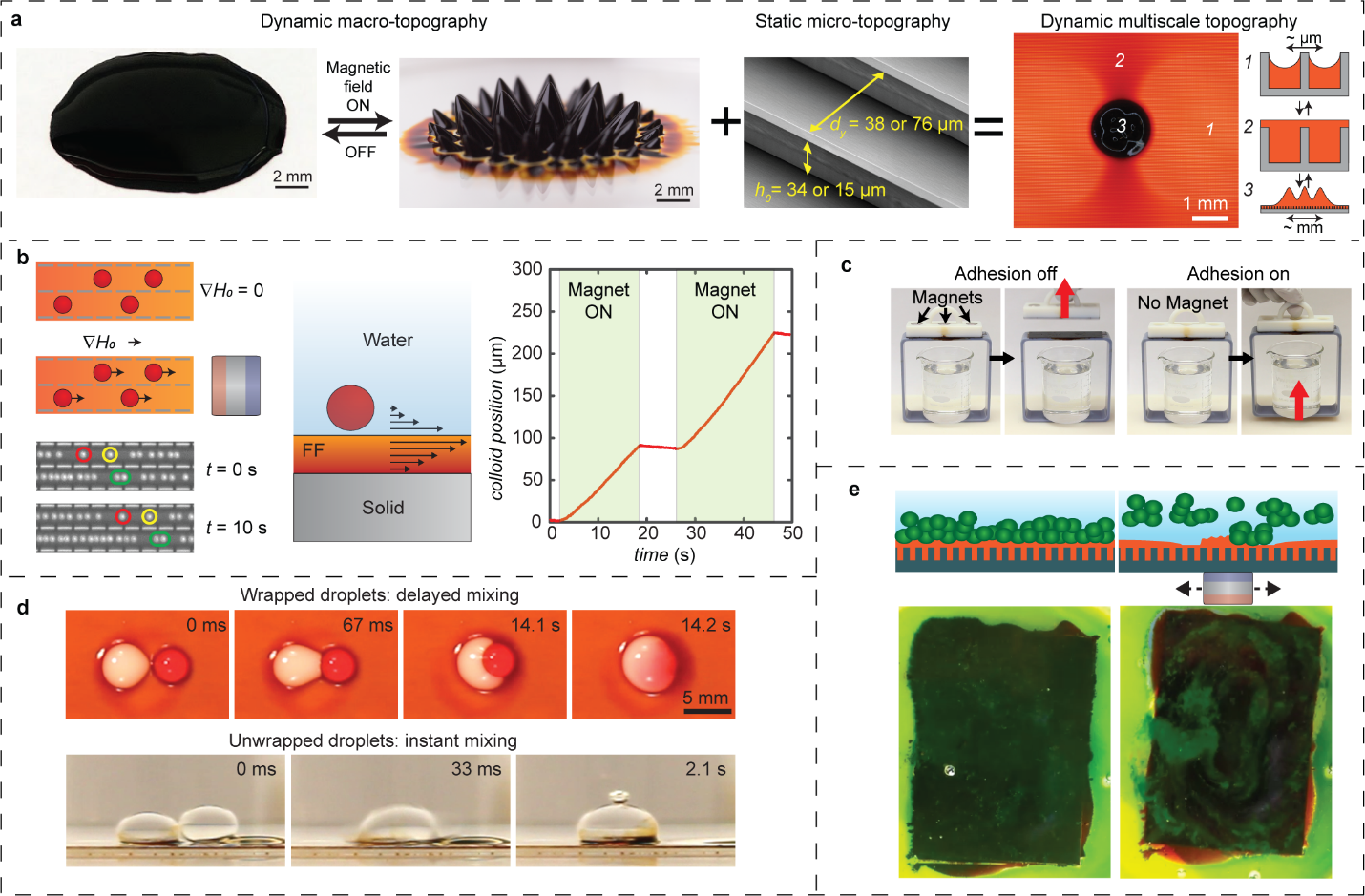
Multifunctional ferrofluid-infused surfaces with reconfigurable multiscale topography. (a) A diagram showing the concept of ferrofluid-containing liquid-infused porous surfaces (FLIPS). (b) Manipulation of non-magnetic colloidal particles on FLIPS. (c) Switchable adhesion on FLIPS. (d) Manipulation of droplets on FLIPS. (e) Biofilm removal on FLIPS.
Developing adaptive materials with changing geometries in response to external stimuli provides fundamental insights into the links between the physical forces involved and the resultant morphologies and creates a foundation for technologically relevant dynamic systems. Recently, gels, polymers, composites and slippery surfaces have been explored as reconfigurable surface to control interfacial properties. However, these concepts exhibit a limited range of topographical changes and thus a restricted scope of function.
In collaboration with a team of researchers, led by Prof. Joanna Aizenberg at Harvard University, we have developed a multifunctional ferrofluid-containing liquid infused porous surfaces (FLIPS) with dynamic reconfigurable multiscale topography. FLIPS is a composite surface, made up of two distinct parts: a micro-structured solid substrate and a ferrofluid, which consists of magnetic particles suspended in a liquid (a). We demonstrate the applications of FLIPS at multiple length scales, including manipulation of colloidal particles at micron scale (b), manipulation of droplets at millimeter scale (d), switchable adhesion (c) and friction, pumping, and biofilm removal at centimeter scale (e). Each of these applications can be further extended. Our results suggest that FLIPS allows much more diverse combinations of functions and capabilities than surfaces that have only a simple, single-scale topographical response. This could be a platform for a lot of future technologies.
